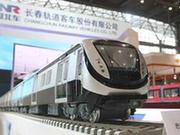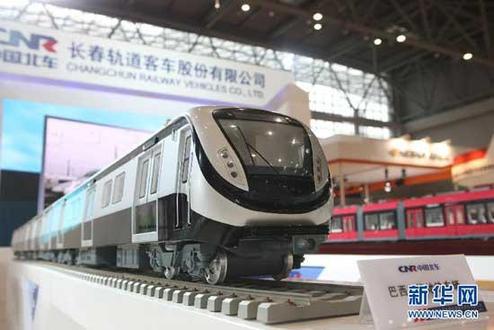Chinese trains on track for success

 0 Comment(s)
0 Comment(s) Print
Print E-mail CNTV, February 21, 2014
E-mail CNTV, February 21, 2014
As China's domestic high-speed rail network becomes more developed, the country's train manufacturing companies are beginning to also find demand for their products abroad. As our reporter Guan Yang tells us, this year's FIFA World Cup in Brazil will be the first chance to showcase Chinese-made trains globally.
With more people around the world moving into cities, and traffic growing more congested, subways and light rail transit have become the preferred way to make a safe, affordable and reliable commute.
And China has become the preferred maker of many of these subway cars. These representatives from the Rio De Janeiro government have traveled all the way to northeastern Jilin province to check on their latest order.
|
As China's domestic high-speed rail network becomes more developed, the country's train manufacturing companies are beginning to also find demand for their products abroad. |
"The trains made by us are quite new to people on the other side of the planet. At first they thought we were from a Japanese manufacturer, but after the first batch of trains started operation last year, the people of Rio got to know us. These electric trains helped us make an impression." Zhao Yao, project manager of China CNR Corporation Limited, said.
Rio placed its first order with CNR in 2012, in preparation for its turn as host of the World Cup and Olympic Games. Another order for a fleet of 60 trains was placed the following year, and will arrive in Rio this April -- proving that China's winning subway bid was more than just luck.
"We had other options from Japanese and European manufacturers. It was a very tough battle for CNR to win the first bid. But after the first batch of trains were up and running, judging by their performance and the service afterwards, we, as well as the people of Rio, were confident in placing a second order." Marcelo Nery Costa, engineering head of Government Of Rio De Janeiro, said.
Part of the Chinese-makers' success was that they tailored their design to the conditions in Brazil. The trains are equipped with special cooling systems to allow them to operate in the country's sweltering weather. Equal thought was put into each of the train's other features.
"The trains exported to Brazil meet the South American standard. The carrying capacity and running speeds are all calculated based on the region's population density. And the lay-out of seats also pay attention to the details." Wang Chengtao, head technician of China CNR Corporation Limited, said.
Combining overseas technology with their own innovations and competitive prices, Chinese train manufacturers are starting to get attention on the international market. The next step is for the country to establish itself as an exporter of not just equipment, but also technology and expertise.






